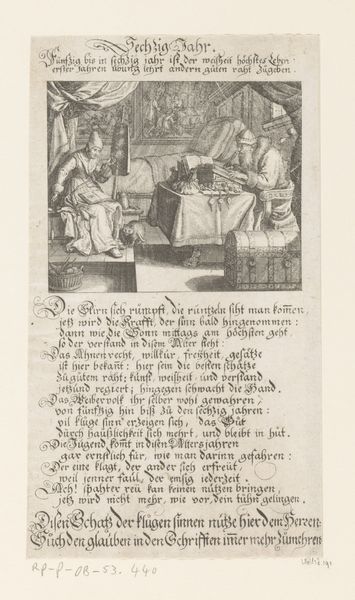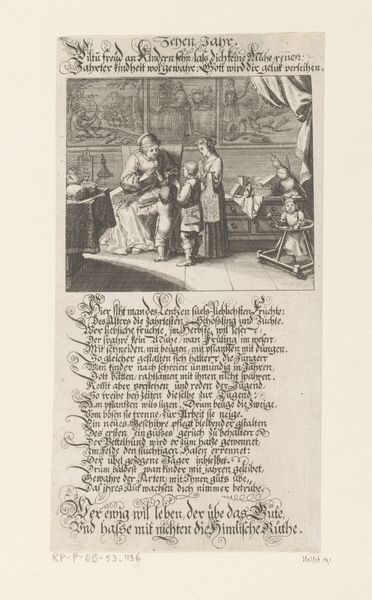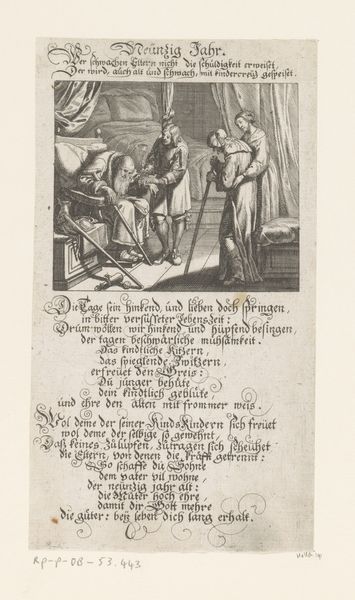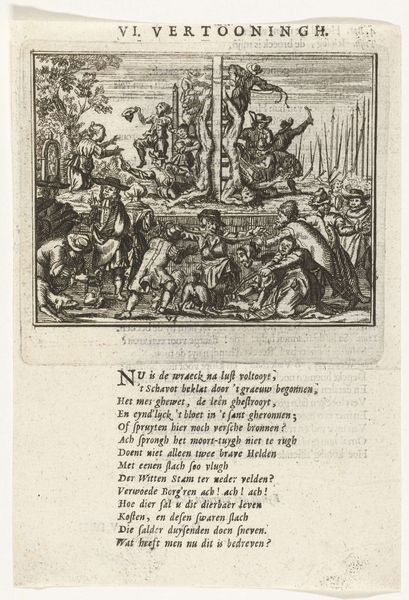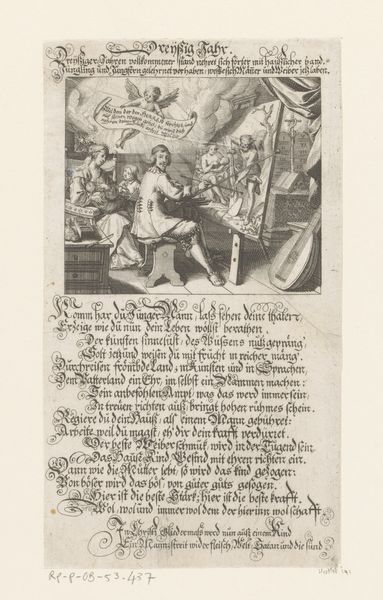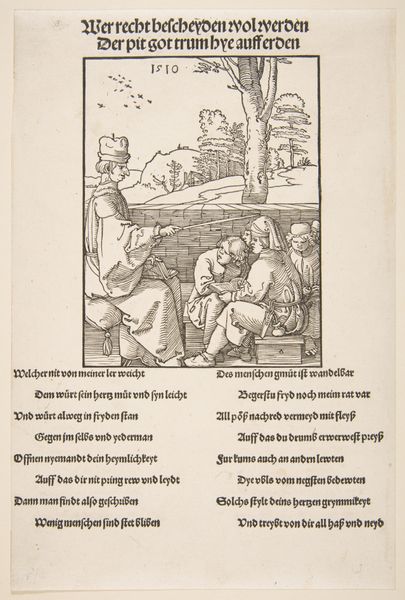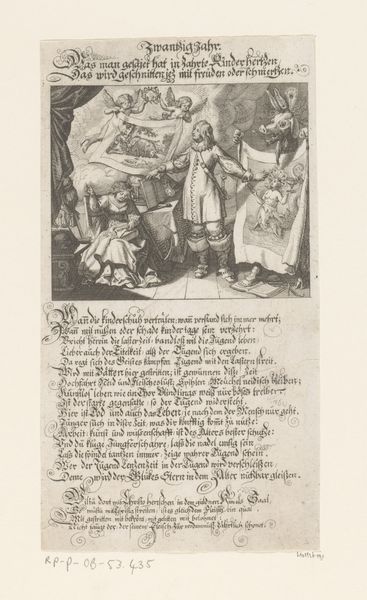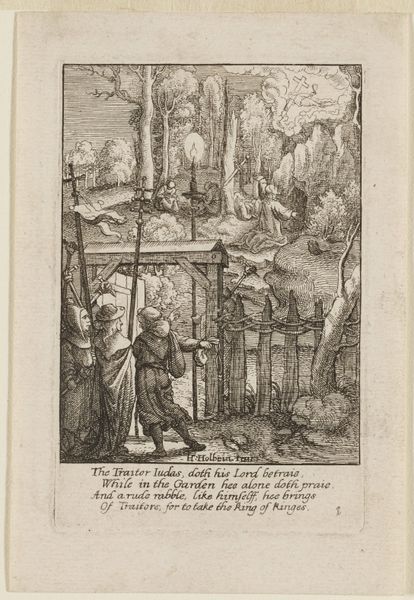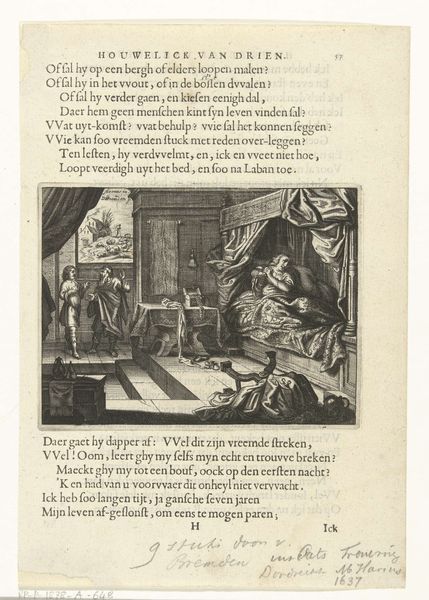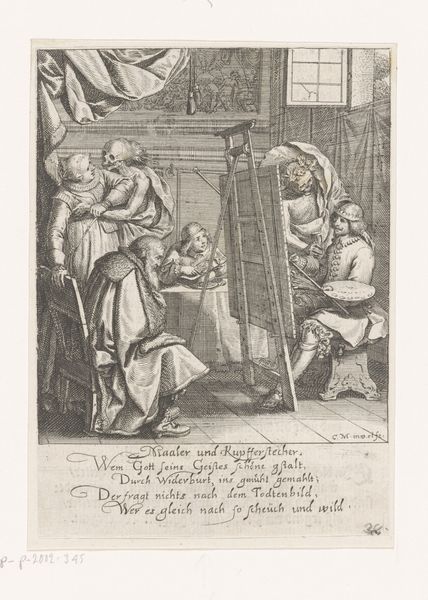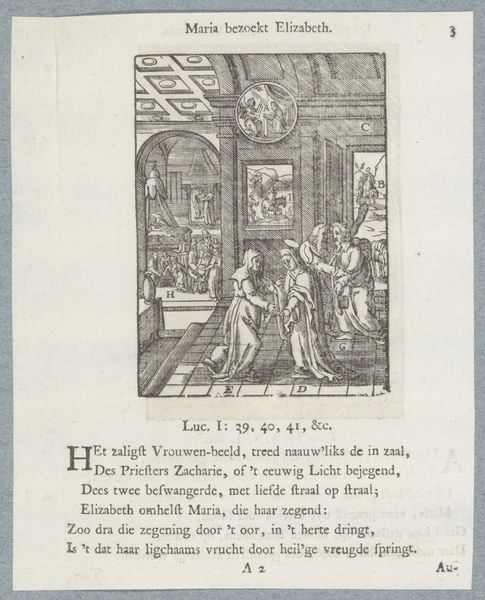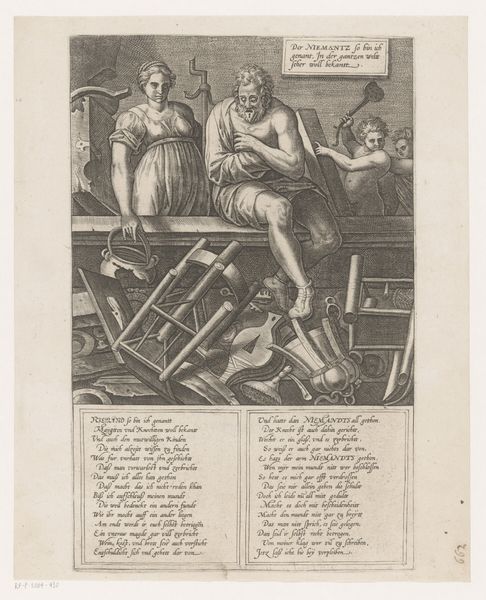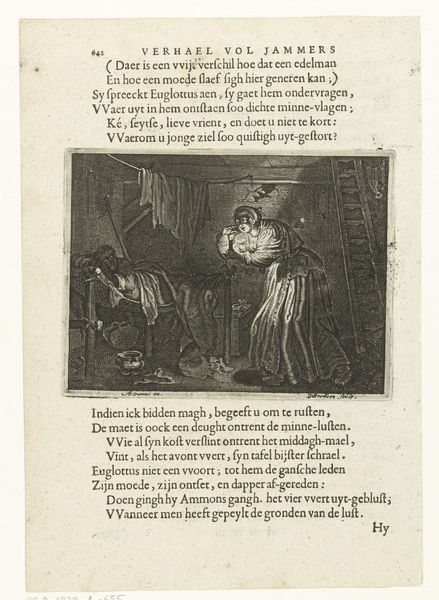
print, engraving
#
portrait
#
narrative-art
#
baroque
#
dutch-golden-age
# print
#
figuration
#
genre-painting
#
engraving
Dimensions: height 234 mm, width 130 mm
Copyright: Rijks Museum: Open Domain
Editor: Here we have Conrad Meyer's "Ouder echtpaar aan de eettafel," or "Elderly Couple at the Dinner Table," from 1675, currently at the Rijksmuseum. It’s a print, an engraving. The detail is incredible! What immediately strikes me is how this image balances everyday life with a somewhat somber tone, even though there is text around it. What do you see in this piece? Curator: As a materialist, I look at the social and economic circumstances that made this print possible. Engravings like these were relatively inexpensive to produce and purchase compared to paintings, making them accessible to a wider audience in 17th-century Netherlands. Editor: That's a fascinating point. How would this broader accessibility affect the artwork's content and themes? Curator: Consider the theme of old age presented here. The "genre painting" aspect, highlighting the mundane routines, suggests that this image catered to a burgeoning middle class eager to see their lives and values reflected back to them. The work romanticizes the aging couple's life; but what about the production and consumption surrounding aging itself? It begs us to question whether this depiction reflects the real circumstances of older individuals or promotes unrealistic ideas about wealth accumulation and consumption. Look closer, can you describe other evidence to support my idea? Editor: I notice the details on the table like their silverware or plates. Were those sorts of things becoming common among regular people at the time? Curator: Precisely! The availability and portrayal of those materials demonstrate evolving manufacturing processes and their increasing role in shaping self-image through domestic items. Editor: That provides a new perspective, viewing the engraving less as art and more as an accessible means to understand a rapidly changing economy and its values. Curator: Exactly, analyzing the tangible elements enables a deep dive into socio-economic forces behind art's creation and reception during the Dutch Golden Age. Hopefully you will now view everything around us in such a light, from artistic practices to modern culture.
Comments
No comments
Be the first to comment and join the conversation on the ultimate creative platform.
